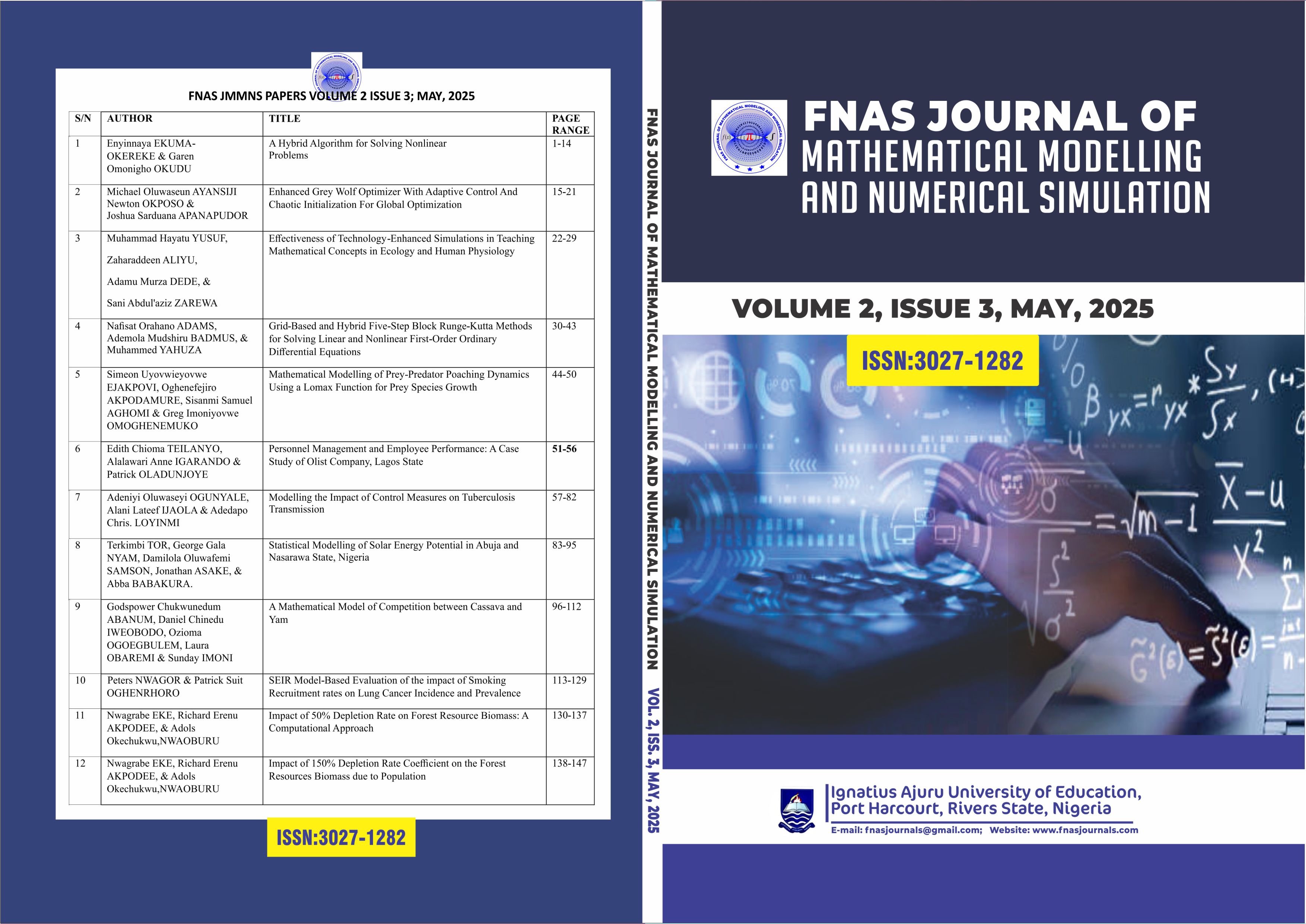Personnel Management and Employee Performance: A Case Study of Olist Company, Lagos State
DOI:
https://doi.org/10.63561/jmns.v2i3.865Keywords:
Personnel Management, Employee Performance, Organizational ProductivityAbstract
An essential aspect of organizational performance is the effective management of employees. Both private and public sector organizations rely on a combination of key resources, including human capital, materials, finances, machinery, and information. The successful integration and utilization of these resources are crucial for enhancing employee performance. This research was conducted in Lagos State to evaluate the influence of personnel management on employee performance at Olist company. A simple random sampling method was employed to select 125 marketing employees from Olist, representing 5% of the company's total workforce. A self-designed questionnaire, titled The Impact of Personnel Management on Employee Performance Questionnaire (TIPMEPQ), served as the primary data collection tool. Data analysis was performed using frequency distribution and percentages to answer the research questions, while Pearson's correlation coefficient at a 0.05 significance level was applied to test the hypotheses. The findings revealed that effective personnel management significantly influences employee performance, particularly at Olist, thereby enhancing organizational productivity. Personnel management involves the recruitment and optimal utilization of human resources, which, when properly managed, can propel an organization toward its goals. For optimal performance, human resources, the most dynamic of all organizational assets, must be appropriately valued and supported. The study recommends regular payment of employee salaries and the provision of recognition through bonuses and incentives to acknowledge workers’ contributions.
References
Armstrong, M. (2010). Human Resource Management Practice: Handbook, 8 Edition, Kegan Page Ltd., London
Atteya, N. M. (2022), “Testing the Impact of the Human Resource Management Practices on Job Performance: An Empirical Study in the Egyptian Joint Venture Petroleum Companies”, International Journal of Business and Social Science, 3(9), 105-119
Bartel, A.P. (2022), “Human resource management and performance in the service sector: the case of bank branches”, NBER Working Paper 7467 Cambridge Mass: National Bureau of Economic Research
Campbell, J. P. (2011). Modeling the performance prediction problem in industrial organizational psychology. In Dunnette, M. D., Hough, L. M. (Eds.), Handbook of industrial and organizational psychology. Palo Alto, CA: Consulting Psychologists Press
Dessler, G., (2018). Human Behavior: Improving Performance at Work. Reston, VA: Reston Publishing Company, Inc.
Dwivedi R S, (2016), “A textbook of Human Resource Management”, Vikas publishing house, Noida
Gerhart, B. & Mikovich, G.T. (2020), “Employee Compensation: Research and Practice”, in Dunnette, M.D. and Hough, L.M. (Eds) Handbook of Industrial Psychology. Palo Alto, CA: Consulting Psychologists Press.
Gospel, H. (2019), “Human resources management: a historical perspective”, in Wilkinson, A.,Bacon, N., Redman, T. and Snell, S. (Eds), The SAGE Handbook of Human Resource Management, Sage, London, pp. 12-30. DOI: https://doi.org/10.4135/9780857021496.n2
Guest, D.E. (2021), “Human resource and management and performance: Still searching for some answers”, Human Resource Management Journal, 22, 1, 3 – 13. DOI: https://doi.org/10.1111/j.1748-8583.2010.00164.x
Kaufman, B. (2020), Hired Hands or Human Resources? Case Studies of HRM Programs and Practices in Early American Industry, ILR Press, Ithaca, NY.
Lawler, E. (2017). Team, pay and business strategies: finding the best mix to achieve competitive advantage. American Compensation Association Journal, 12-24.
Parker, L.& Ritson, P. (2021), “Rage, rage against the dying of the light: Lyndall Urwick’s scientific management”, Journal of Management History, Vol. 17 No. 4, pp. 1-40. DOI: https://doi.org/10.1108/17511341111164409
Pfetter, S., & Sutton RI, (2022). Evidence-based management. Harvard Business Review, January, pp 62-74


